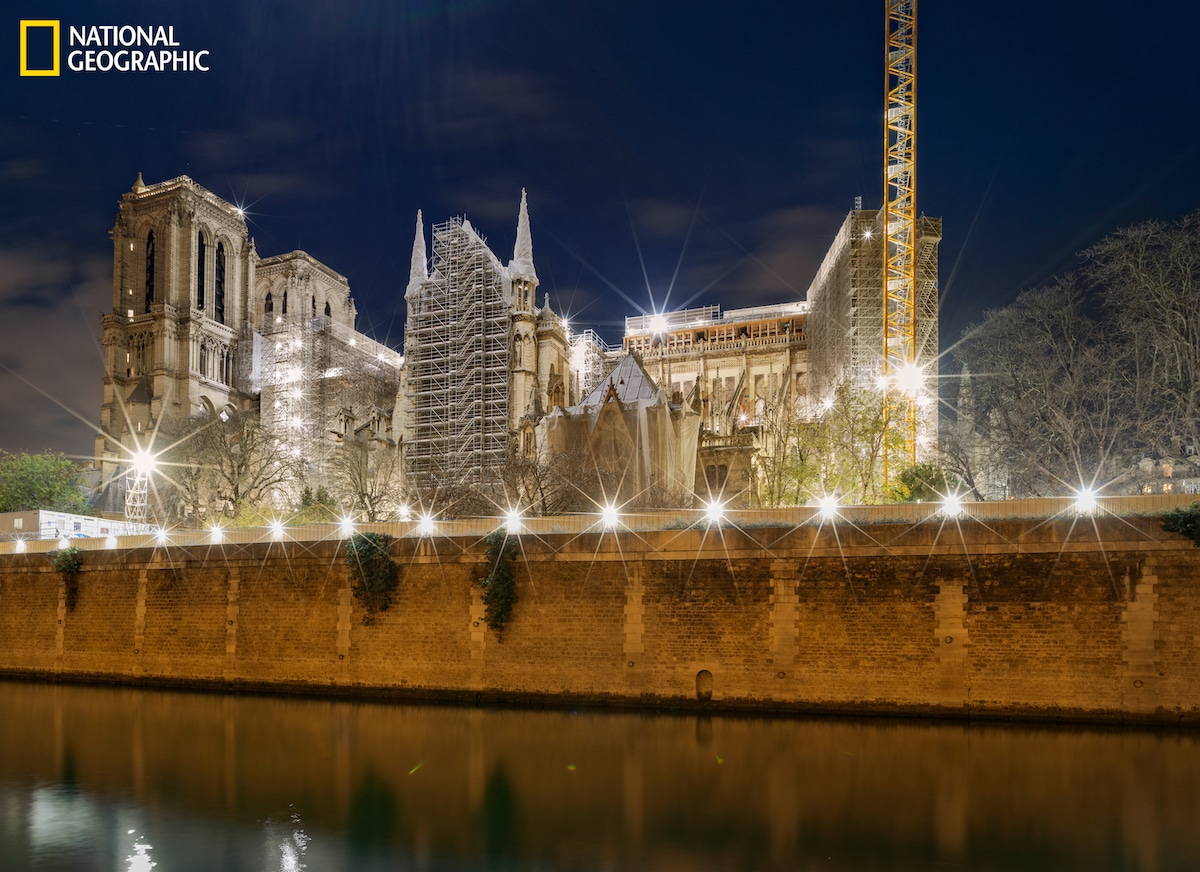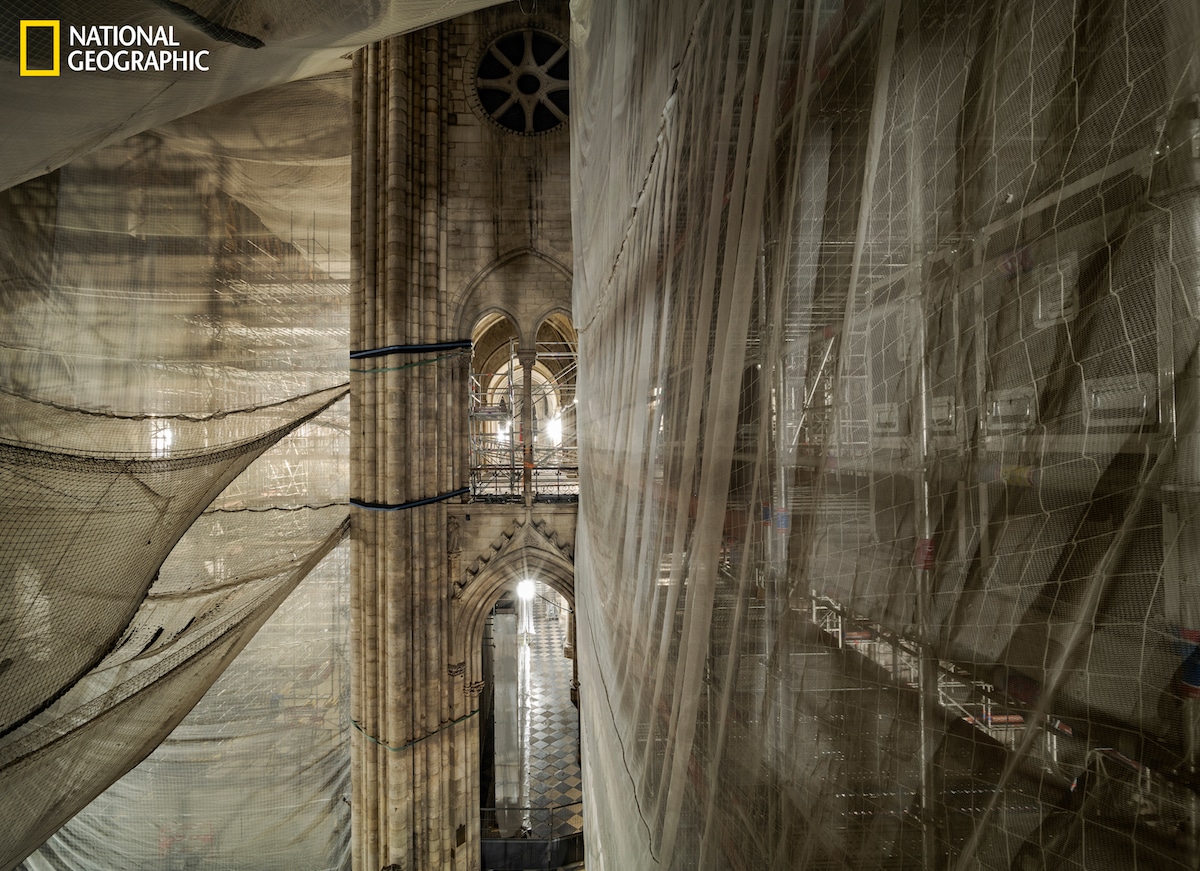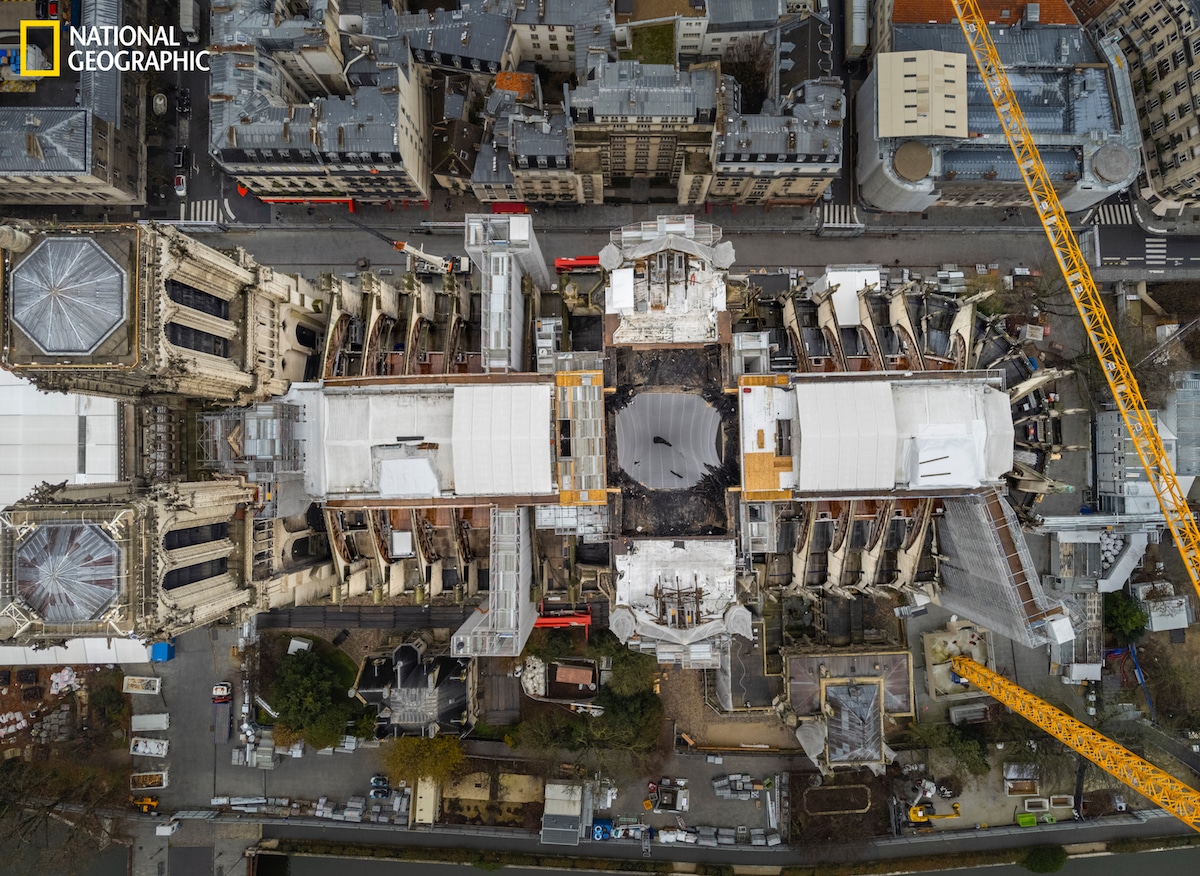But the church has recovered from trauma before.
In 1831, from this vantage point across the Seine, Eugene Viollet-le-Duc watched a mob attack it.
Later he directed the first restoration of Notre Dame, preserving the landmark the world knows today.

Scaffolding and a giant crane now mock the cathedral’s aspiration to loftiness; a metal wall topped with razor wire surrounds the site. But the church has recovered from trauma before. In 1831, from this vantage point across the Seine, Eugène Viollet-le-Duc watched a mob attack it. Later he directed the first restoration of Notre Dame, preserving the landmark the world knows today. (Photo: Tomas van Houtryve/National Geographic)
Plans to rebuild the iconic structure were announced before damage was completely understood.
This plan honors the 20-year restoration completed by Eugene Viollet-le-Duc after the riot and fire of 1831.
People working on the restoration will tell you: Its the project of a lifetime.

People working on the restoration will tell you: It’s the project of a lifetime. The pandemic slowed things down, and lead-safety procedures are aggravating. But sometimes “there were just five or six of us in the cathedral,” says archaeologist Dorothée Chaoui-Derieux. “That will never happen to us again.” For the next three years Notre Dame will be buzzing with workers, and then worshippers and tourists will return. (Photo: Tomas van Houtryve/National Geographic)
The pandemic slowed things down, and lead-safety procedures are aggravating.
But sometimes there were just five or six of us in the cathedral, says archaeologist Dorothee Chaoui-Derieux.
That will never happen to us again.

By 2024, if all goes according to plan, a drone in this position would be hovering just above the tip of Notre Dame’s new spire—a faithful reproduction in oak and lead of the one built by Violletle-Duc, which was destroyed in the fire. The new spire will be erected piece by piece through the hole in the stone vaulting left by the old one. Meanwhile, white canopies block the rain. (Photo: Tomas van Houtryve/National Geographic)
Houtryve wanted to be authentic in the representation of the church.
He used a wooden camera, glass plates, and a portable darkroom to create photographs.
Its part of the fabric of Parisian reality.

Photographer Tomas van Houtryve captured the 19th-century grotesques, or chimeras, with 19th-century equipment: under a dark cloak, on glass plates, with a wooden camera he picked up in a Paris antique shop. (Photo: Tomas van Houtryve/National Geographic)
Keep scrolling for more images of Notre-Dame.
For even more coverage, head over toNational Geographic.
Meanwhile, white canopies block the rain.
(Photo: Tomas van Houtryve/National Geographic)